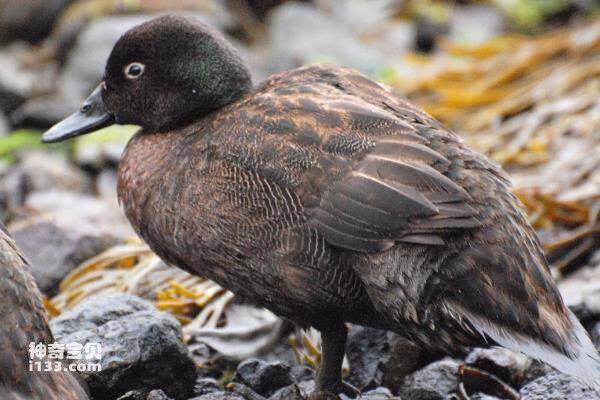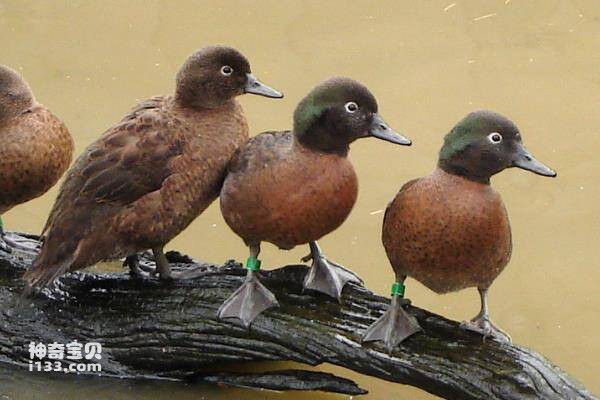Anas nesiotis
IUCN
LCBasic Information
Scientific classification
- name:Anas nesiotis
- Scientific Name:Anas nesiotis,Campbell Islands Teal
- Outline:Waterfowl
- Family:
Vital signs
- length:46-50cm
- Weight:500-600g
- lifetime:Anas nesiotis
Feature
The plumage is dark brown and the male has a shiny green head during the breeding season
Distribution and Habitat
This unique New Zealand duck is found in the extreme southern end of the fjords (south-west of the South Island) and in some areas of the North Island. It is also found on the Hauraki Gulf Island in Tirimataki (in the East end of Auckland).
Kan Island ducks are found mostly in coastal swamps, ponds, and swampy lowland forests.
Appearance
The duck is 46-50 cm long and weighs 600g for males and 500g for females. The plumage is dark brown and the male has a shiny green head during the breeding season. The chest and wings are reddish-brown and the top brown. There are white markings on the back. The underbelly of female, young and male ducks is almost uniformly reddish-brown. The duck's beak is blue. Where the wing mirror should appear is an empty green frame. This species is distinguished from other members of the genus by its chestnut colored eyes with white circles.
Details
The Campbell Islands Teal (Anas nesiotis) is a medium-sized swimming bird belonging to the family Anatidae.

Kan Island ducks are timid and mainly nocturnal, gathering in small flocks with couples or families, never in large flocks. Male and female ducks pair up all year round. They defend their territory during the breeding season. It mainly feeds on roots, grass seeds, leaves, grass fruits, rice, etc. in marshes and lake areas, and also eats invertebrates and arthropods.

In the wild, the Kan duck has the opposite season to other nesting and breeding birds. It is conducted from July to December. The bowl-shaped grass nest of the nest is hidden far below the nearby water grass. Female ducks usually lay six eggs. During this time the duck is very active at night. They feed among riverbank vegetation.
Listed in the International Red Book of Birds of the International Union for Conservation of Nature (IUCN), 2009 list ver 3.1 - Critically Endangered (CR).
Listed in Appendix I of the Washington Convention.
Listed in Appendix I, Appendix II and Appendix III of the Convention on International Trade in Endangered Species of Wild Fauna and Flora (CITES) 2019 edition.
Protect wild animals and eliminate wild meat.
Maintaining ecological balance is everyone's responsibility!








